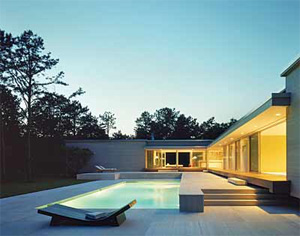If you go by newspapers and monthly consumer magazines, you might think there is only one female architect designing significant buildings today—Zaha Hadid. To be sure, the London-based, Iraqi-born architect deserves acclaim for her inventive assortment of zoomy structures completed in the last few years. But what about the rest? Aren’t there other talented women architects out there, who, like Hadid, run their own design practices? record has decided to take a closer look at women who run their own firms in the United States, to see how much gender affects getting ahead. How far have women come since the feminist call-to-arms of the 1970s? In 1977, the landmark exhibition Women in American Architecture, an Historical and Contemporary Perspective opened at the Brooklyn Museum of Art in New York. The show, organized by Susana Torre and sponsored by the Architectural League of New York, brought the contributions of scores of unheralded women architects, past and present, to the public’s attention. What about today: Are women more prevalent in the profession than they were 30 years ago?

![]() Female Firms, Male Values? Are women trying too much to emulate men's values, attitudes and approaches in order to run successful architecture firms? Respond now.
Female Firms, Male Values? Are women trying too much to emulate men's values, attitudes and approaches in order to run successful architecture firms? Respond now.
In order to reduce the number of variables in this not-very-scientific investigation, we talked to female architects who have practiced a number of years on their own, by themselves or with other women. We disallowed firms with male partners, unless the female principals had spent a length of time with their own firm before adding (or subtracting) male partners. The goal of this study is not to prove that women practicing alone are better or worse off than women with male partners: We just wanted to find out what it’s like. And what advice would the female architect give female architecture students and graduates who are thinking of starting their own firms?
While we have contacted women architects from various areas in the U.S., most come from New York City. The sample is skewed geographically probably because, with all the architecture schools in the city or nearby, and because of New York’s attractiveness to young people looking for jobs, it tends to be a hot bed of female architects with their own firms. And in this highly competitive environment, with serious economic stakes, the women’s stories bear scrutiny for others thinking of following the same path.
Today, women make up only 13.3 percent of the American Institute of Architects (AIA), whose members include 62,400 licensed architects. (Altogether, registered architects number 91,000 to 110,000, depending on the source.) The percentage of females may sound mingy, but it indicates serious progress. In 1975, the AIA determined that women composed only 1.2 percent of all registered architects. By 1991, the AIA estimated that 9.59 percent of its members were women, with 4.3 percent owning their own firms. Fifteen years later, women form 13 percent of solely owned practices in the AIA. However, the number of female architecture students, according to the National Architectural Accrediting Board, averages 40 percent for B.Arch. and M.Arch. programs; apparently only a small portion enter the profession.



Post a comment to this article
Report Abusive Comment